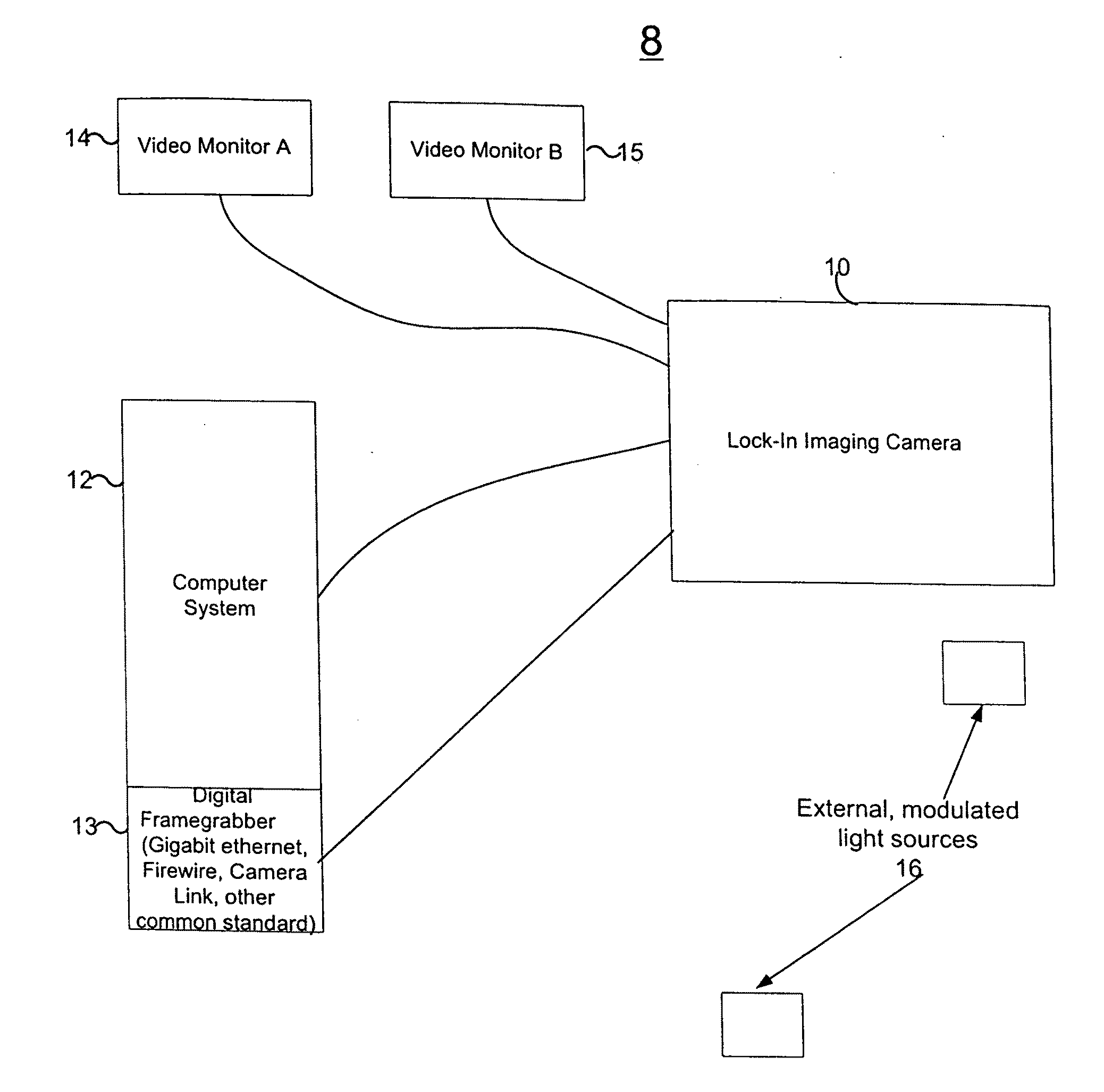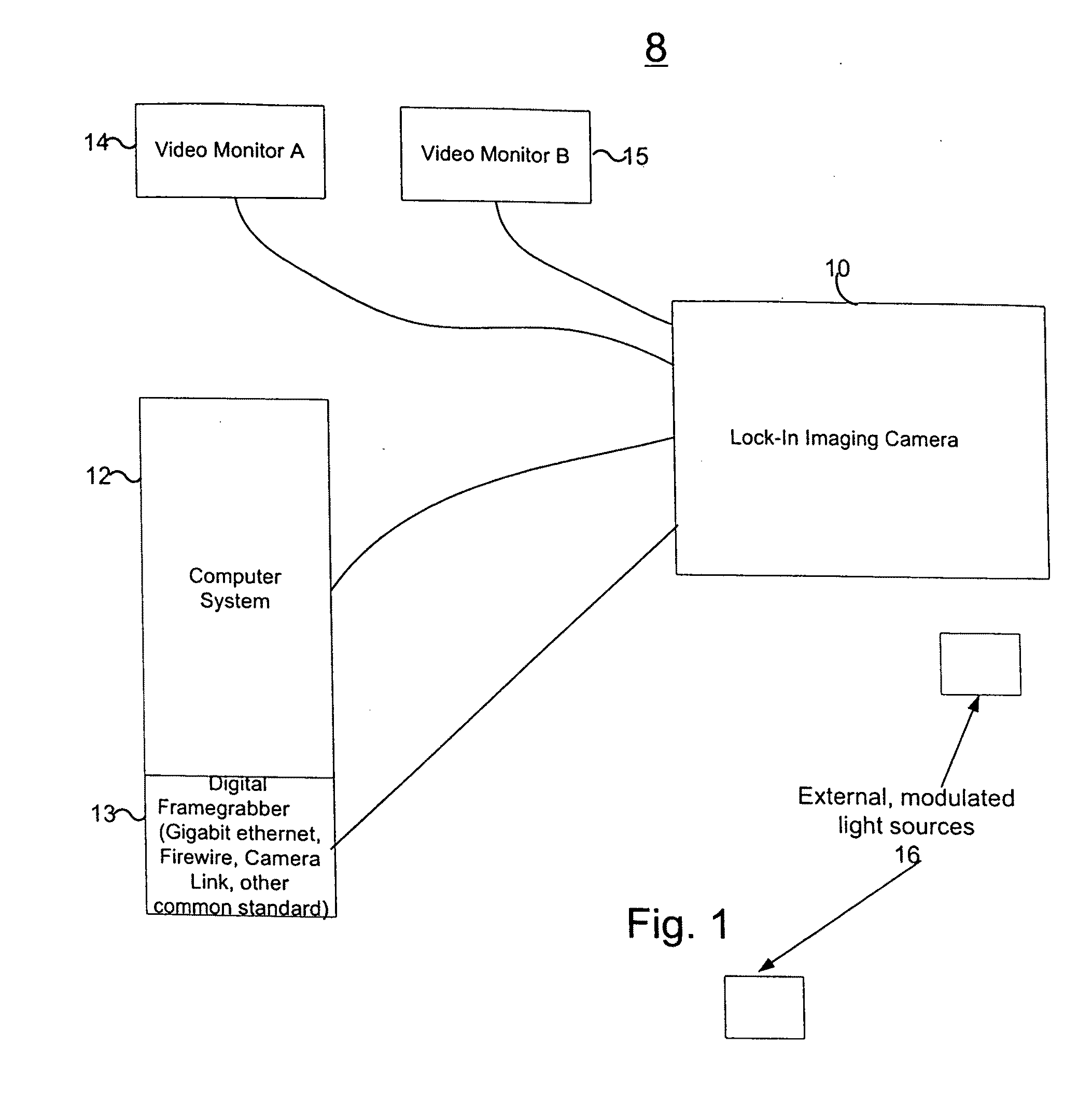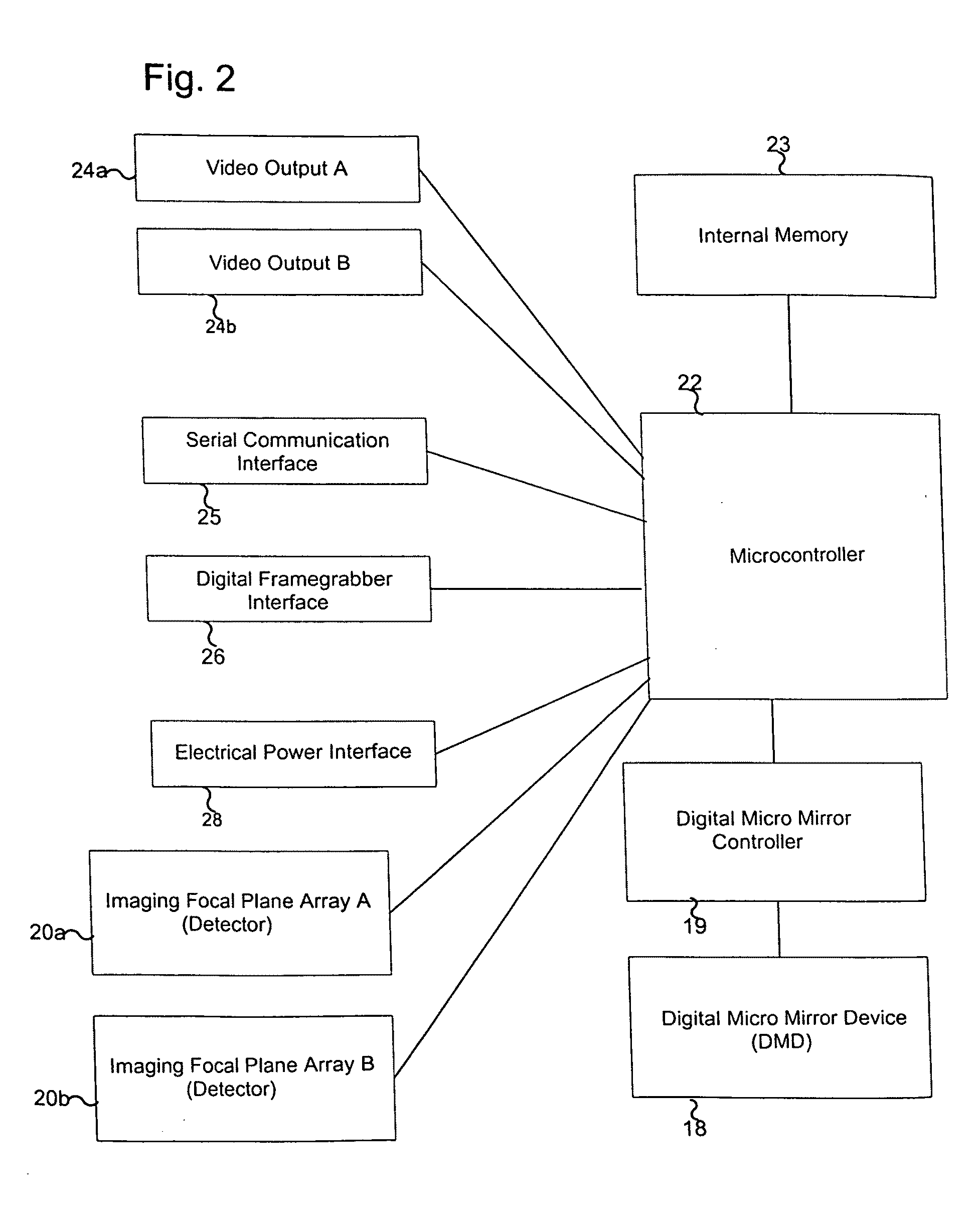Dual site imaging camera
a dual-site imaging and camera technology, applied in the field of dual-site imaging cameras, can solve the problems of difficult detection of traditional digital imaging approaches, saturated bright signals, and imaging a modulated source which changes faster than the integration time of imaging
- Summary
- Abstract
- Description
- Claims
- Application Information
AI Technical Summary
Benefits of technology
Problems solved by technology
Method used
Image
Examples
Embodiment Construction
[0032]Referring to FIG. 1, the system 8 is shown using the camera 10 of the present invention. Camera 10 is an electro-optical imaging system that may operate like a typical digital camera. Commands and queries can be sent to and received from the camera over a serial communications link from a personal computer system 12, such as a desktop, laptop, or other programmed microprocessor based system, to control the operation of camera 10.
[0033]Computer system 12 may have components 13 for digital frame capture, such as available from National Instruments line of cards like the PCI-1426, or including types of frame grabbing standards such as Gigabit Ethernet Vision, or Firewire, or high speed USB, or Camera Link. The camera 10 can provide digital representations of the images it captures at a rate of speed commensurate with the live acquisition rate of the camera over an appropriate cable (or wireless) to such components 13 in the computer system 12. The camera 10 also presents a video ...
PUM
 Login to View More
Login to View More Abstract
Description
Claims
Application Information
 Login to View More
Login to View More - R&D
- Intellectual Property
- Life Sciences
- Materials
- Tech Scout
- Unparalleled Data Quality
- Higher Quality Content
- 60% Fewer Hallucinations
Browse by: Latest US Patents, China's latest patents, Technical Efficacy Thesaurus, Application Domain, Technology Topic, Popular Technical Reports.
© 2025 PatSnap. All rights reserved.Legal|Privacy policy|Modern Slavery Act Transparency Statement|Sitemap|About US| Contact US: help@patsnap.com



